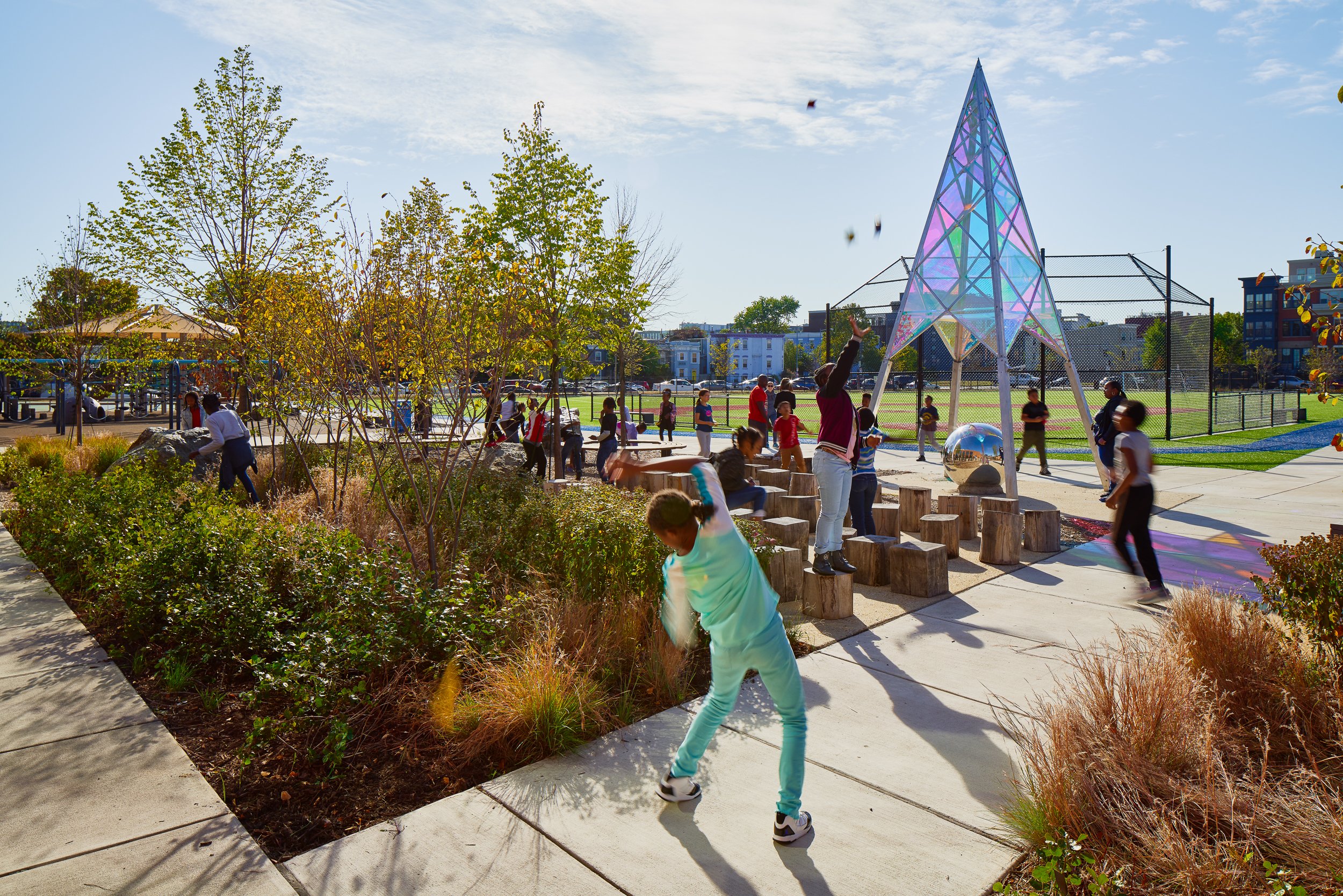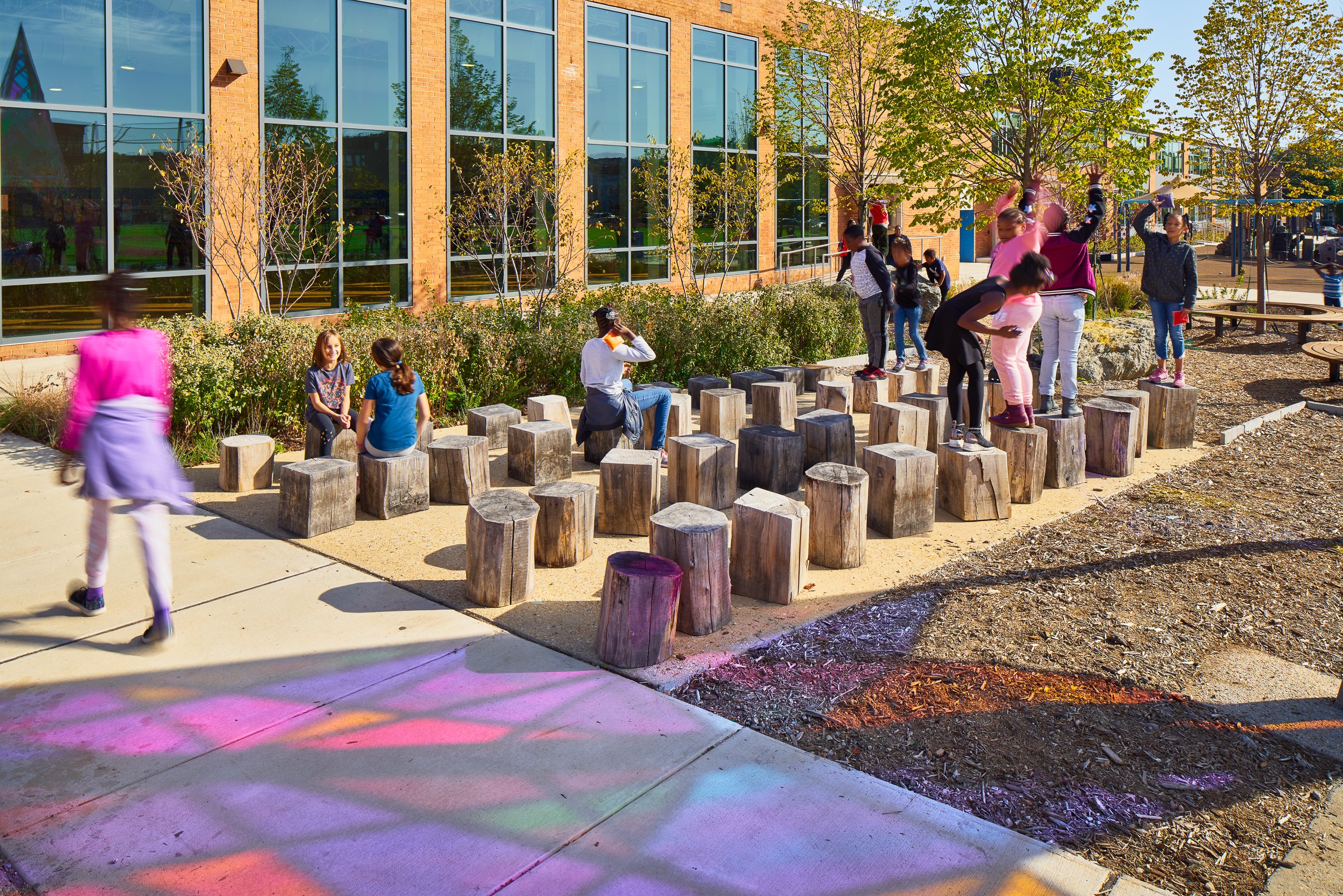
Garrison Elementary School Washington, DC
Services Provided
Landscape Architecture
Public Art
Construction Documentation
People Involved
Jonathan Fitch
Lyn Wenzel
A school modernization creates lively recreation and social spaces for a growing community, provides a unique setting for youth to learn environmental education and stewardship, and honors the site’s history and celebrates present and future youth.
The Garrison Elementary School project, located in the heart of DC’s Shaw and Logan Circle neighborhoods, began as a community design effort wherein the design team collaborated directly with parents, neighbors, and other local community groups to develop a site plan that would guide the future modernization of the school’s grounds. These initial site studies became the basis for developing the 6.5-acre site into a multi-functional park space that serves both the school and the surrounding neighborhood. The resulting landscape is one which is sensitive to the site’s historic character, creates lively recreation and social spaces for a growing community, and provides a unique setting for youth to learn environmental education and stewardship.
As a site on which significant historic events have taken place, the team worked with the community and the entire design team to craft a site strategy that celebrates and commemorates the history of Camp Barker, one of many “contraband camps” that were constructed to house formerly enslaved persons, many of whom were eventually recruited as soldiers by the Union. The outdoor classroom is located where Abraham Lincoln is said to have attended services with formerly enslaved people.
The front façade of the school spans S Street and acts as the ‘front yard’ and most public edge of the site. A grand entry stair, sidewalk ‘pull-off’ zones, and a stabilized gravel nature path create a variety of spaces that engage public passerby and define the school’s identity. The nature path, punctuated by precast concrete benches, is designed to encourage students, teachers and community members to gather, interact with and observe both plant life and the life of the neighborhood. The design for the rear of the site reclaims the bulk of the former parking lot for use as active recreation space (soccer, baseball, track) and playground areas that support age-appropriate play for pre-K and K-5 age groups. The design team worked closely with District Department of Transportation (DDOT) to outfit this space with benches made from reclaimed street tree lumber.
The initial community design work was completed as a pro-bono effort. The full modernization project involved coordination among parent and teacher groups as well as with the DC regulatory agencies.






